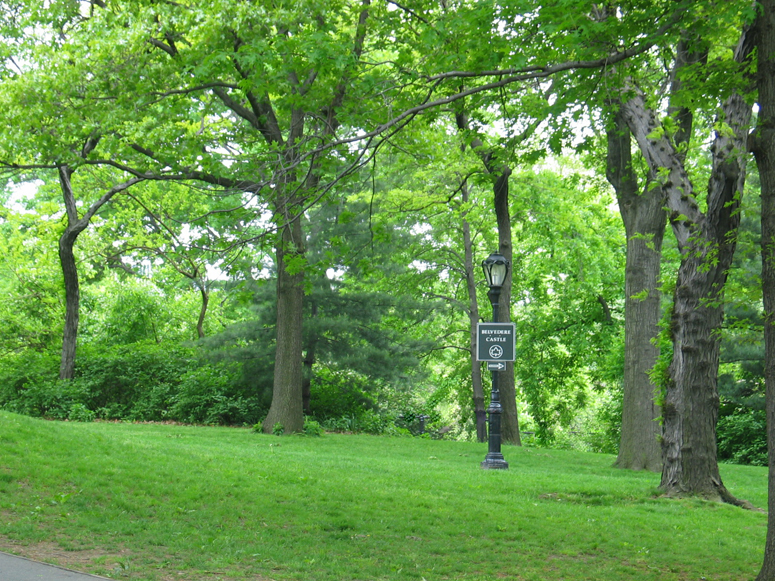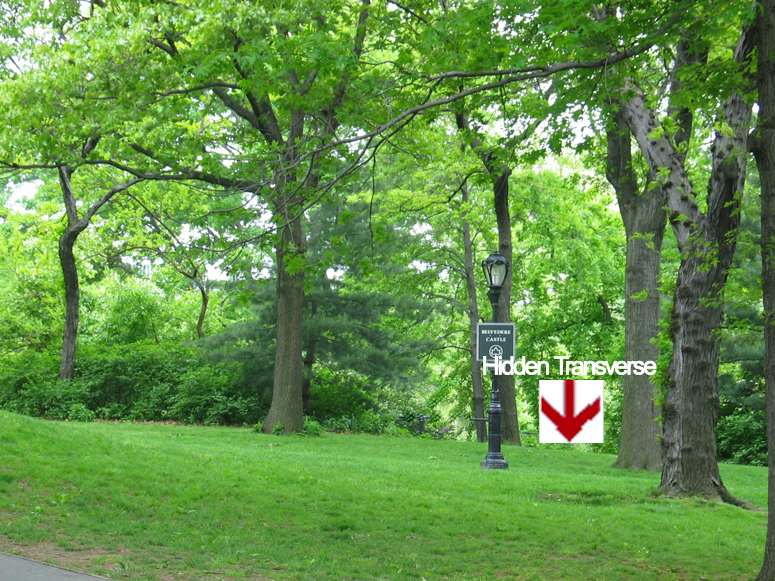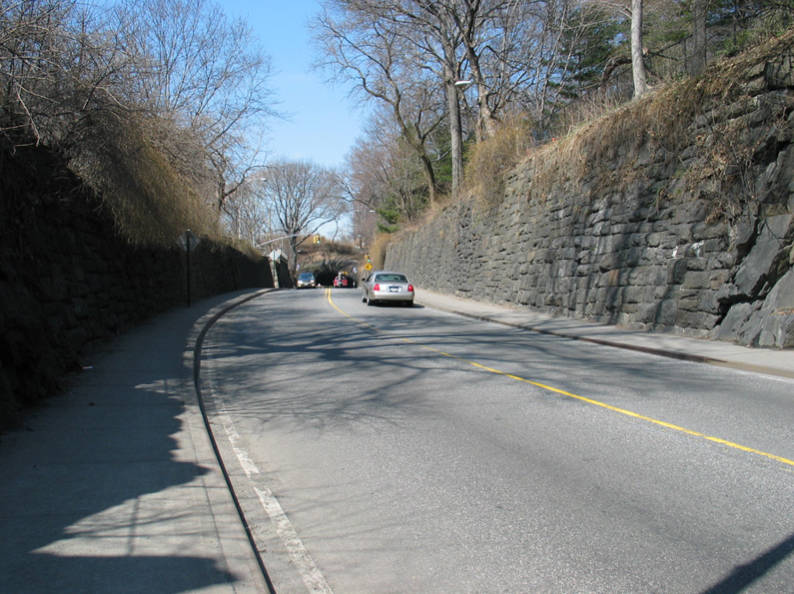 |
|
| Central Park was designed by Frederick Law Olmstead and Calvert Vaux in the 1850's. The design is fanstastic, a lot of subtle features come together to make Central Park a quiet, peaceful, beautiful place. Olmstead was really influenced by English landscape design. One feature of this design is known as a "ha-ha". A ha-ha is basically a sunken wall. As you look out across the landscape, your view isn't blocked by "unsightly" fences and walls. All you see is unobstructed "nature". |
|
|
| |
| (Incidentally, Jane Austen mentions ha-ha's in "Mansfield Park". Fanny Brice says:"You will hurt yourself, Miss Bertram," she cried; "you will certainly hurt yourself against those spikes; you will tear your gown; you will be in danger of slipping into the ha-ha.") |
Anyway, Olmstead used this same concept in the east-west roads that cross Central Park. These roads are known as "transverses". Look at this view below, pretty much all you see is nice green grass and trees. |
 |
But just beyond those trees, down a steep hill, is a hidden transverse. |
 |
| |
The transverses are very busy streets. But the steep walls block a lot of sound, which does a lot to make Central Park a relatively quiet, peaceful place. |
 |
| |
| |
| |
|
|
|
|
 |
|

